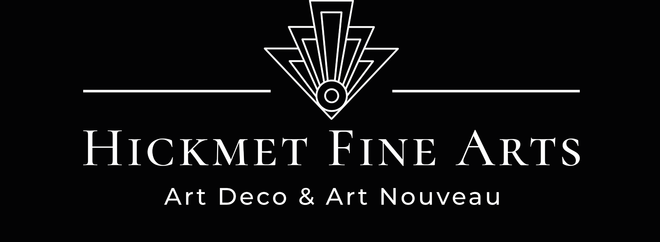A very fine Animalier bronze group of a standing cow with her calf exhibiting excellent colour and very fine hand chased surface detail, signed Fratin
Sorry, this item has been sold. If you would like information about similar items please contact us on 07971850405 or make an enquiry via email here.
ADDITIONAL INFORMATION
Height: 22 cm
Width: 32 cm
Condition: Excellent Original Condition
Circa: 1860
Materials: Bronze
Book reference: Bronzes of the 19th Century by Pierre Kjellberg
SKU: 8149
ABOUT
Christopher Fratin
(1 January 1801 – 16 August 1864), also known as Christophe Fratin, was a noted French sculptor in the
animalier style, and one of the earliest French sculptors to portray animals in bronze. Fratin was born in Metz, Moselle, France the son of a
taxidermist. He first studied drawing under Pioche in Metz and later worked in Paris at the studio of Théodore Géricault.
Work
He exhibited at the Paris Salon from 1831–1842 and 1850–1862, as well as at the Great Exhibition in London in 1851. Fratin never signed his bronzes but instead used a stamp showing his last name in straight block letters. One of the stamps he used (pictured) showed the "n" reversed, not by design but due to an error on the part of the maker of the stamp. Bronzes bearing this stamp have the appearance of not seeming to be genuine when in reality they are.
Fratin received monumental commissions in France and elsewhere, including the Deux Aigles Gardant Leur Proie (Eagles and Prey, created 1850) displayed since 1863 in New York City's Central Park. Many of his small bronzes—including his miniature bronzes which were more affordable due to their smaller size—were sold commercially to the general public during his lifetime. Today, Fratin's sculpture is on permanent display in the Louvre, the city museums of Metz, Lyon, Strasbourg, Nîmes and at the Peabody Institute in Baltimore, Maryland. The Georg Eisler archive in Vienna also has on display works by Fratin.
A number of Fratin's pieces portray horses, especially portraits of famous horses such as Fermer, cheval anglais pur-sang, a wax of which he debuted at the Salon of 1831, the same exhibition in which Barye's Tigre dévorant un gavial was featured.
At Montrouge Square in Paris appears a colossal bronze group standing 2 meters high entitled Cheval attaqué par un lion, executed in 1852. Fratin received many commissions from the State including groups designed for the botanical garden and the esplanade of his hometown; amongst the groups were two dogs, a deer at bay, a purebred horse, and some eagles. He also produced a number of whimsical bear sculptures, one being Ours jouant de la cornemuse which shows a bear holding a musical instrument.
Fratin Gazelle
Gazelles are thin, graceful antelopes that live in Africa and Asia. They resemble deer and are in the same family as goats, cattle and sheep. Gazelles can be identified by their curved, ringed horns, tan or reddish-brown coats and white rumps. Often, there are spots or stripes on their coats. Their light frames help make them agile and better able to escape from predators.
There are 19 species of gazelle, according to the Integrated Taxonomic Information System (ITIS). Smaller species, such as the Speke’s gazelle and Thomson’s gazelle, are only 20 to 43 inches (51 to 109 centimeters) at the shoulder. They weigh from 26 to 165 pounds (12 to 75 kilograms). The dama gazelle is the largest gazelle. It weighs in at 88 to 165 pounds (40 to 75 kg) and is 4.5 to 5.5 feet tall (137 to 168 cm).
To view our range of bronzes by Fratin please click here.















